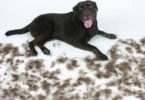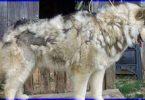 Just like for humans there is an abundance of shampoos and conditioning treatments on the market for dogs today. It is sometimes difficult to determine which type of shampoo is best suited for your pet’s particular coat. Listed below are the different types of shampoos and what types of coats they work best on. I have included some personal recommendations regarding brands that I have tried and like, to hopefully make your choices a bit easier. However, trial and error is often the best decision maker. As a general rule of thumb,the average pet owner should not use human shampoo on their dog. Their skin is thinner than human skin, and the PH is slightly different than a human. The major difference is the quantity of hair and the large surface area of haired skin on the dog. Dogs also have sweat glands in their skin that are very different from a humans. Groomers who show their dogs in conformation frequently use human products, however these dogs are an exception to the rule.
Just like for humans there is an abundance of shampoos and conditioning treatments on the market for dogs today. It is sometimes difficult to determine which type of shampoo is best suited for your pet’s particular coat. Listed below are the different types of shampoos and what types of coats they work best on. I have included some personal recommendations regarding brands that I have tried and like, to hopefully make your choices a bit easier. However, trial and error is often the best decision maker. As a general rule of thumb,the average pet owner should not use human shampoo on their dog. Their skin is thinner than human skin, and the PH is slightly different than a human. The major difference is the quantity of hair and the large surface area of haired skin on the dog. Dogs also have sweat glands in their skin that are very different from a humans. Groomers who show their dogs in conformation frequently use human products, however these dogs are an exception to the rule.
Shampoo for Skin Disorders
If your dog has a skin disorder, it is advised to see a dermatologist. They are trained to recognize which shampoo therapy is needed and which medicines to use with the shampoo. Diagnosing the problem correctly is critical and from what I have seen of vets, apparently difficult. If he has a skin disorder, special prescription shampoos and rinses are important in the treatment of the skin. Diagnostic testing is a good idea to identify, improve and correct the underlying issue causing the disorder. If your dog has what looks like dry skin, feel the skin and hair with your hands. If your hands get oily or waxy, this is evidence that the skin is producing more oil than normal and may need more frequent bathing to remove the excess oils and increased skin secretions. If you pet your dog and the coat feels dry and brittle, then special moisturizing conditioners are needed along with your shampoo. Adequate contact time is necessary for the ingredients in the shampoo to penetrate into the pores of the skin and down along the hair shaft. These shampoos carry medication to the skin. These types of shampoos usually do not lather well because of the medications in them.
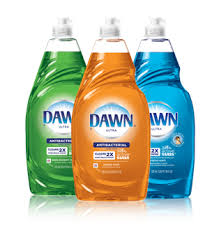 Flea Shampoo
Flea Shampoo
Flea shampoo is used to remove flea eggs and dried blood which the fleas leave on your pet, but many flea shampoos cleanse your pet as well. Along with flea shampoo, it is recommended to use a topical or oral flea deterrent on your pets. The problem with using flea shampoo as the only means of flea control is that once the shampoo is rinsed off there is no pesticide activity left on the pet. This means that new fleas in the environment can immediately repopulate your pet. If the pet is brought back to a home where fleas are waiting for the pets return, the pet is quickly re-infested with fleas. The pet owner is often unaware that this re-infestation came from his own house, yard or other pet living inside or outside of the home. It is not advised to use flea shampoo on puppies or nursing mothers. If your puppy or mother dog become infested, you may bathe your dog in Dawn dish washing detergent.
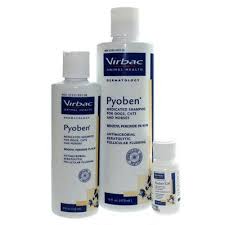 Shampoo for Bacterial Infection
Shampoo for Bacterial Infection
One of the most common canine skin disorders is a skin infection accompanied by bacteria. Antibacterial shampoos are an important factor in the treatment of skin infections. Most prescribed antibacterial shampoos contain either benzoyl peroxide, chlorhexidine, or ethyl lactate. One of these would be used for the initial treatment of skin infections. Other bacterial ingredients found in shampoos are triclosan and iodine. Iodine shampoos may stain light colored dogs. It is also a contact sensitizer so some animals and humans can develop contact sensitivity reactions to iodine. Triclosan is a mild antibacterial and is used in shampoos for use after the bacterial infection has been cleared by the first line of treatment with shampoo and medicine. Shampoos with Triclosan or any of the first line bacterial ingredients such as ethyl lactate, chlorhexidine or benzoyl peroxide can act as a preventative shampoo against future recurrence of bacterial infections. Along with the shampoo, medications are usually prescribed to prevent or correct the underlying disorder. Common medications are steroid vaccinations for allergic dogs, thorough flea prevention for dogs allergic to the saliva of the flea (known as flea bite dermatitis) and sometimes a combination of both.
 Shampoo for the Itchy Dog
Shampoo for the Itchy Dog
Just the physical process of bathing can sometimes soothe the itchy dog. Not only is the cleansing and medicated effect of the shampoo important but also the water applied to the skin has tremendous benefit in adding moisture back to diseased skin. This is particularly true if contact time with the water is 10 to 15 minutes. Therefore, thorough rinsing between shampoos serves dual purpose. It removes potentially irritating shampoo ingredients and it allows the skin to absorb water. Too short a bath can have the adverse effect, it can remove the skin moisture and have a drying effect on the skin. After bathing and soaking the skin adequately with water, creme rinses have ingredients in them that bind the water to the skin and helps to keep moisture in the skin longer. There are several shampoos on the market today that have anti itch agents in them. These agents can consist of colloidal oatmeal, tar and pramoxine. (A topical local anesthetic agent) Topical anesthetics act like novacaine by blocking the nerves that feel the itch. Most of these topical anesthetics are not safe to use on the pets skin, so read the label carefully. Pramoxine is the only one that is safe to use on a frequent basis. These agents used alone rarely stop the itching completely but they can offer temporary relief.
The simple act of bathing, removing dirt and oil, adding moisture to the skin and the cooling effect of bathing has a soothing effect.
Dandruff Shampoo-Dandruff shampoos are used to remove scales (dandruff) and crusts (scabs). The active ingredients in most dandruff shampoos is sulfur and salicylic acid. There are no major differences between the major brands except the way they lather, feel and smell. Three veterinary recommended brands are SeborX, SebaLyt, and Sebolux. Tar shampoos are more potent and are usually used for removing scales and crusts. Tar is used in the more severe cases. Tar has several effects on the skin, it has anti itch effects, crust breakdown, and restores damaged skin. Since tar has an offensive odor, and there are many other shampoos that perform the same function without the offensive odor, it is reserved for those conditions where there is severe crusting that needs the stronger properties of tar. Most of the time one of the plain sulfur and salicylic acid shampoos are very effective. Again, if your dog has dandruff and crusting, shampoo alone will more than likely not solve your problem. Your veterinary dermatologist will need to determine the cause of the problem and treat with additional medications in conjunction with shampoo. Some human dandruff shampoos work well for removing dandruff such as Denorex and Selsun Blue. I do not recommend using these shampoos though on a regular basis.
Color Treatment Shampoos-These shampoos are formulated for dogs with either black, white, gold or red colored coats. They are great for enhancing the natural color of the coat and are best suited to dogs with normal, healthy skin and coats not accompanied by skin disease.
Black shampoos are formulated to get the red out of black coats. They restore the intense black color to coats stripped of their color by the bleaching effects of the sun.
Whitening shampoos remove yellow stains and leave a lustrous sheen on the coat. The higher quality shampoos contains no bleaching agents, no caustic chemicals, or softening agents.
Gold shampoos are used to enrich gold, brown and red color tones. Works beautifully on dark multi-colored breeds such as German Shepherds and Belgian Sheepdogs. Intensifies gold, enhancing the depth of color in the coat and enhances all warm colors; reds, browns, golds and tans.
Red Shampoos enrich red, mahogany shades and deep mahogany to gold mahogany shades.
Clarifying Shampoos-Removes waxes, oils, resins and build-up from conditioners and other products that weigh down the coat with regular use.
De-Shedding Shampoo-These shampoos are formulated to reduce excessive shedding and promote a healthy skin and coat. These shampoos typically contain moisturizers and essential omega fatty acids that help hydrate your dog’s skin and hair follicles which makes them less likely to be dry, brittle and fall out in the form of shedding. It is suggested to thoroughly brush your dog’s coat prior to shampooing with a good quality brush or de-matting rake or comb. My favorite tool for dogs that shed is an undercoat rake. These help remove stubborn undercoat and loosen dead hair.
Moisturizers and Creme Rinse-Moisturizers and creme rinses are used after bathing to prolong the moisturizing effects of the water on the skin. Some creme rinses consist of just moisturizers, while some contain colloidal oatmeal, or a combination of oatmeal and the topical anesthetic agent pramoxine to act as anti itch agents as well as the moisturizing action. Some creme rinses have insecticides in them to allow the addition of an insecticide and a moisturizer to your pets skin. Moisturizers are grouped into two types-oils and non oils. The oil types of moisturizers use olive, cottonseed, corn, almond, peanut, or coconut oil, to name a few, to add oil to dry skin. If your pets skin is already oily, these may make the skin too oily. The moisturizers also contain essential nutrients which help restore nutrient loss in damaged skin. The non oily moisturizers have non oily moisturizing factors such as lactic acid or carboxylic acid which acts by binding the water which was absorbed by the skin during bathing. For best results, all of these moisturizing agents should be used after the skin has been adequately hydrated by thorough bathing or soaking in water prior to use. If water is absorbed by the skin during bathing, then this is sealed in by the creme rinse or moisturizer.
Protein Volumizers- These add volume to any healthy coat type. They replenish lost protein by implanting a high volume of low molecular weight proteins into the hair shaft. They volumize thin, skimpy coats while repairing and protecting coat hairs. They strengthen weakened coat shafts and repair split ends.
In closing, for pets with normal skin and hair, bathing with any normal shampoo that is pleasing to both you and your pet is fine. Bathing on a normal routine basis, once a month, is an important way to keep your pet healthy, clean, fresh and a pleasure to be around.
Bathing with a medicated shampoo is a very beneficial part of the treatment of every pet with skin disease. In order for shampooing to achieve maximum benefit, the shampoo must contain the appropriate ingredients for the disorder, and every effort to correct the underlying cause of the skin disorder must be made in conjunction with the bathing regimen.
Personal Recommendations:
 Normal Skin Care –Epi Pet
Normal Skin Care –Epi Pet
This is the best skincare to use on all types of coats.I use Epi Pet Cleansing Agent Shampoo in my shop on a regular basis. It is hypo-allergenic, tearless and soap free. It is a multi functional cleansing agent shampoo and is an excellent way to start a skin treatment program for your pet. That is one of the reasons I like it. I don’t need 10 different bottles of shampoo for different coat textures and skin conditions. The unique formulation of this PH controlled product removes dead skin, dirt, debris and excessive oils. The skin and hair coat are left with a supple and soft condition while natural vanilla and lavender essential oils provide a pleasant, light aroma. Because it is enzymatic it can be used for several different skin conditions. To use as a :
Medicated Shampoo-Heat 1-2 oz. of shampoo in the microwave for 7-10 seconds. Apply the heated shampoo to wet coat and work into the hair. Allow to set for 3-5 minutes then rinse.
 Flea Shampoo-Apply 1-3 oz. of shampoo depending on the size of the dog you are bathing. (1oz. small dog, 2oz. medium dog, 3oz. large dog) Allow shampoo to soak for 5 minutes. This will kill the fleas that are on the pet at that time.
Flea Shampoo-Apply 1-3 oz. of shampoo depending on the size of the dog you are bathing. (1oz. small dog, 2oz. medium dog, 3oz. large dog) Allow shampoo to soak for 5 minutes. This will kill the fleas that are on the pet at that time.
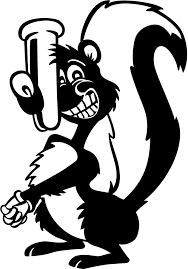 De Skunking-Heat 4-6 oz. of shampoo in the microwave for 20-25 seconds. Mix well. Apply to a dry coat all over the body. Use a human hair dryer on the lowest setting. Blow the shampoo into the pets coat for 5-10 minutes until the shampoo is almost dry. Then rinse the pet. This will only work if the pet never got wet after being sprayed by the skunk. If any water touched the pets coat it will set the skunk oil. When you rinse the coat out it should be a rust color, that is normal, it is the skunk oil being released out of the skin and coat.
De Skunking-Heat 4-6 oz. of shampoo in the microwave for 20-25 seconds. Mix well. Apply to a dry coat all over the body. Use a human hair dryer on the lowest setting. Blow the shampoo into the pets coat for 5-10 minutes until the shampoo is almost dry. Then rinse the pet. This will only work if the pet never got wet after being sprayed by the skunk. If any water touched the pets coat it will set the skunk oil. When you rinse the coat out it should be a rust color, that is normal, it is the skunk oil being released out of the skin and coat.
Lifting Stains- Saturate several pieces of cotton or gauze and heat in the microwave for 3-5 seconds. Then apply to a dry coat where there are stains. This can be done on a daily basis and is safe to use around the eyes.
Face & Body Folds-Saturate several pieces of cotton or gauze and wipe out the face and body folds to reduce bacteria, fungus and yeast growth.
Allergy Feet-Saturate several pieces of cotton or gauze and wipe between the toes of the pet if the feet are irritated from allergies and they are chewing at their feet. This can be repeated daily or every other day. Then follow up with the enrichment spray daily.
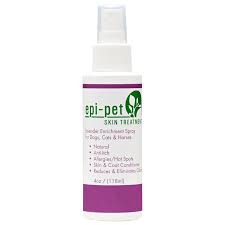 Enrichment Sprays-This multi functional enrichment spray is an excellent way to treat the dry, itchy, flaky, oily and smelly skin issues that so often plague your pets. The lavender aroma provides a calming, therapeutic effect on hyperactive pets while providing 6 natural insect repelling properties. The cedar scent also has 6 natural insect repelling properties and has a subtle scent of peppermint and cedar wood. The unscented skin spray offers relief from skin irritations without the essential oils. It also helps in aiding hairball reduction in cats when used daily. All three sprays treat skin allergies and supports veterinary treatment for skin allergies. It can also be used to reduce shedding and itching.
Enrichment Sprays-This multi functional enrichment spray is an excellent way to treat the dry, itchy, flaky, oily and smelly skin issues that so often plague your pets. The lavender aroma provides a calming, therapeutic effect on hyperactive pets while providing 6 natural insect repelling properties. The cedar scent also has 6 natural insect repelling properties and has a subtle scent of peppermint and cedar wood. The unscented skin spray offers relief from skin irritations without the essential oils. It also helps in aiding hairball reduction in cats when used daily. All three sprays treat skin allergies and supports veterinary treatment for skin allergies. It can also be used to reduce shedding and itching.
Medicated Shampoo -Zymox
The first line of defense against infectious microbes is the skin. Zymox Shampoo provides an effective way to protect this natural barrier without being irritating or drying. Only the mildest plant surfactants are used and the enzymes have anti inflammatory properties to calm the skin. The shampoo contains no harsh detergents, chemicals or petroleum bi-products and features a pleasant, mild fragrance.
- Pure and gentle enough for puppies and kittens
- Does not contain harsh detergents, steroids, or petroleum by-products
- Calms and soothes itchy allergy prone skin
- Provides natural inflammation relief
- Pleasant mild fragrance
Zymox Conditioning Rinse produces a powerful protective barrier against minor skin inflammations and surface irritations due to bacterial and fungal microbes. For best results, wash first with the shampoo and use as a leave-in rinse for residual effectiveness. Can also be safely applied full strength directly to most problematic areas
Bio-active enzymes have been shown to be effective against:
- Pyotraumatic Dermatitis
- Trichopyton
- Pseudomonas
- Impetigo
- Candida Albicans
- Staphylococcus
- Bodyfold Pyoderma
- Malassezia
- Microsporum
I love the way this shampoo smells and I like the fact that you add a little water to the conditioner but leave most of the product in the coat. It is not heavy or oily on the coat. It leaves it soft, supple and fresh smelling. It is hydrating and moisturizing. This is one of my choices for skin with bacterial infections and itchy, smelly skin. I do not care for the Virbac brand shown above that is recommended by most conventional veterinarians.
Skin & Coat Care for your Dog -Lowell Ackerman DVMChoosing Dog


